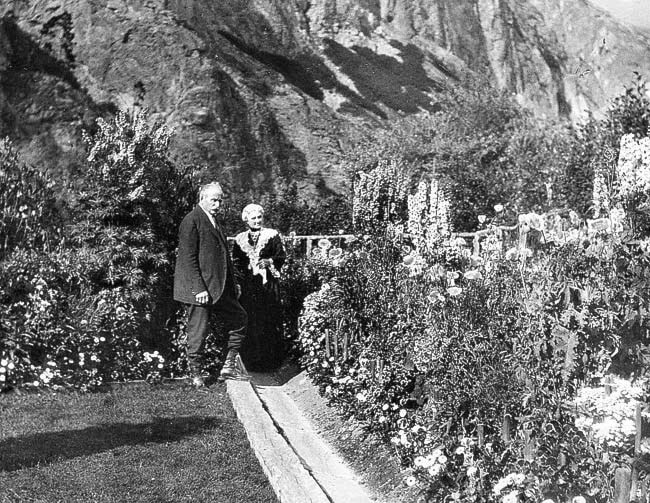It was a long journey, but it was worthwhile.
After voyaging 1,600 kilometres up the West Coast to Skagway, scaling the White Pass Summit by train and crossing Lake Bennett on a sternwheeler, travellers to the Yukon in the 1920s were greeted with a spectacular surprise.
Tucked against the mountains on the southern tip of Taku Arm, seemingly in the middle of nowhere, the travellers found a cozy homestead with a lush garden and a couple who made the remote spot their home.
Otto and Kate Partridge created Ben-My-Chree in 1911, and lived there until their deaths 20 years later.
Their reputation for hospitality made their home a must-see stop on the White Pass and Yukon Route’s tour.
Though the Partridges became an important Yukon attraction, it was the lure of gold that brought Otto to the Yukon in 1897.
Like many other men who came north during the Klondike Gold Rush, Otto did not make it to the gold fields.
He landed in Bennett operating a “Mosquito Fleet” of three boats - the Ora, the Nora and the Flora - with the Bennett Lake and Klondike Navigation Company.
After Otto scouted out the land, Kate joined him in 1898. The pair settled in Milhaven, south of Carcross, where they operated a small sawmill and lived in a houseboat on the lake.
The mill supplied railroad ties until the White Pass and Yukon Route railway was built and the depletion of the forests made it no longer profitable.
Otto then turned his business acumen to mining on Taku Arm. With the help of two wealthy friends, he pooled together money to develop a gold find made by another prospector, Stanley McLennan.
Cabins were constructed and mining began in earnest. Thing were going well until a spring thaw brought disaster. An avalanche began to slip down the mountain and brought a shower of rocks onto the tramway and cabins connected to the mine.
Several members of the crew were overtaken and killed, including Stanley McLennan and his wife.
After the tragedy, all mining activity stopped, but the Partridges were undeterred.
“In the course of all these labours they had come by an affection for the land,” according to The Story of Ben-My-Chree, published by the White Pass and Yukon Route.
“They were identified with it; it was theirs. And besides, Mr. Partridge was not the sort to accept defeat.”
They began building their homestead and Otto christened it Ben-My-Chree, which means “Girl of My Heart” in Manx, a language spoken on the Isle of Man where Otto was raised.
Though the couple had varying degrees of success over the years in a variety of different businesses, they were best known for the hospitality they extended visitors to Ben-My-Chree.
Dressed in a formal gown, Kate would welcome visitors at the garden gate and Otto would take them on a tour of the gardens.
Then the couple welcomed the travellers into their home where they entertained them with songs and stories and sometimes, a glass of wine.
“Those who visited them in those days tell that to see Mr. and Mrs. Partridge together was to be aware of the harmony of their minds and outlook,” according to The Story of Ben-My-Chree. “Each was the complement of the other. Their devotion was palpable without parade.”
Otto died on June 28, 1930 and Fanny followed on January 10, 1931. They are buried side by side in the Whitehorse Cemetery.
Though the Partridges were gone the White Pass and Yukon Route company kept stopping at Ben-My-Chree until the 1950s.
This column is provided by the MacBride Museum of Yukon History. Each week it will explore a different morsel of Yukon’s modern history. For more information, or to comment on anything in this column e-mail lchalykoff@macbridemuseum.com.
